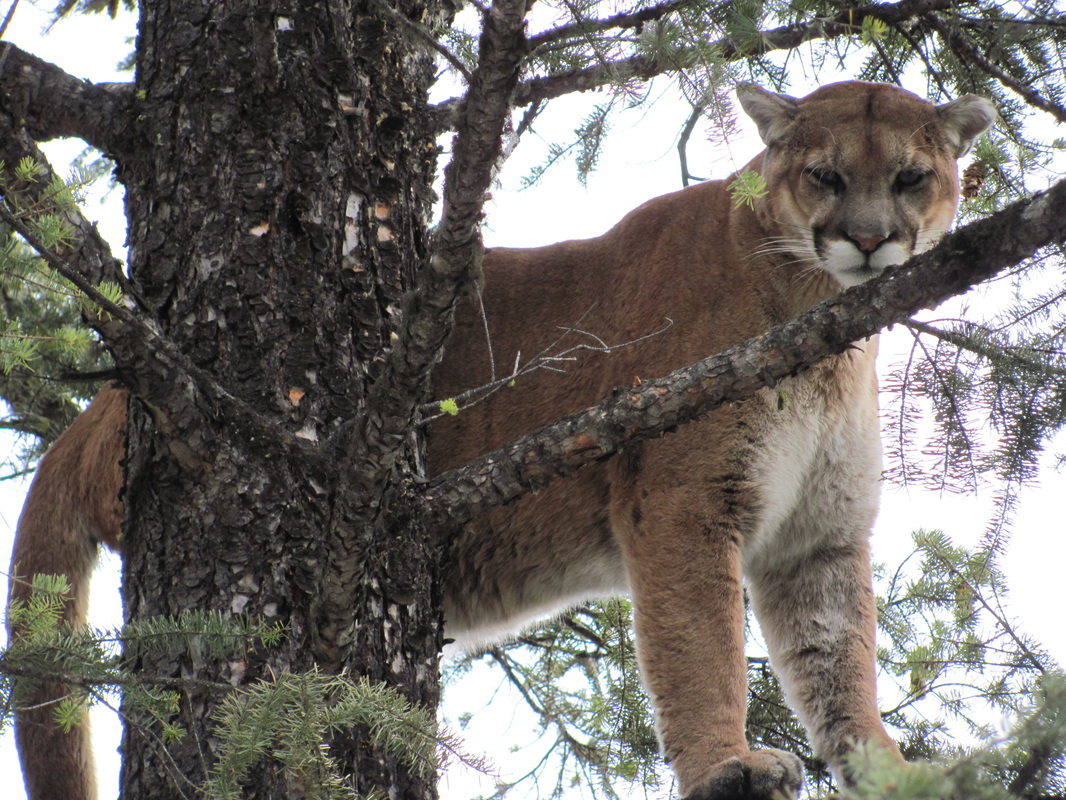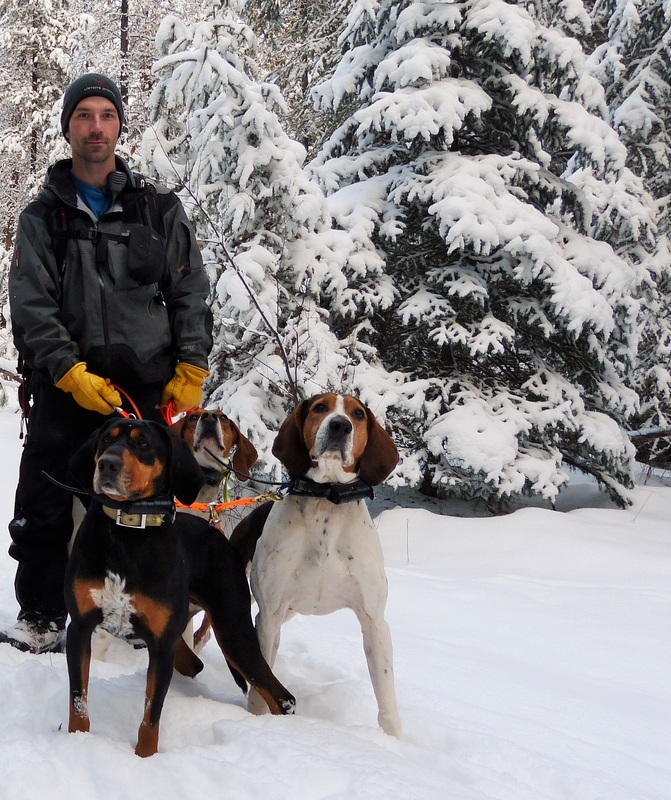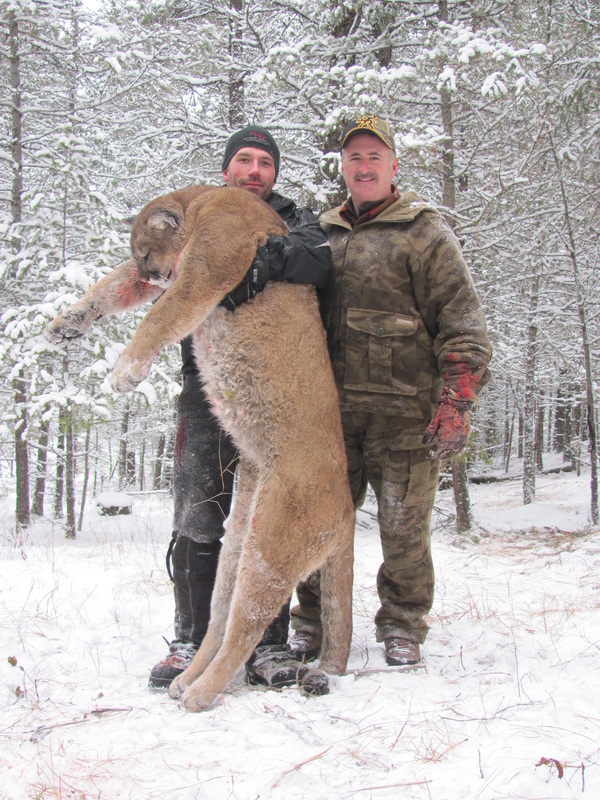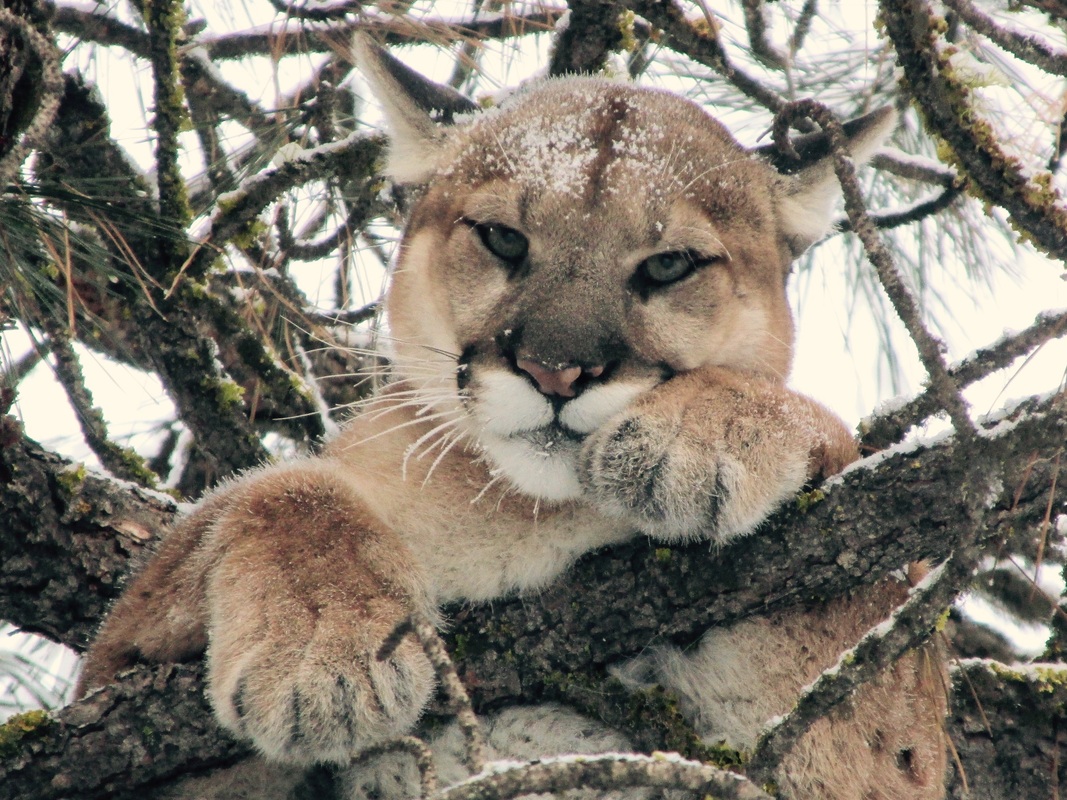So you’ve seen pictures of big mountain lions and heard stories about chasing a pack of cougar hounds through the mountains and canyons of the west and you think you’d like to try it. Or maybe you have never considered it and you hold a common misconception about the ease of hunting with hounds. There is a lot to consider and to prepare before you commit to your first adventure behind a pack of hard hunting dogs. Taking into account your fitness level, gear and clothing requirements, outfitter selection, alternative species offered during the hunt, and knowing what to expect on this kind of adventure are all important aspects. Without a doubt it’s a hunt worth considering, but first you need some prep work and a little background on this amazing adventure.
The relationship between hunter and hound dates back over a thousand years and being involved in a hound hunt is an amazing opportunity, one that is steeped in history and tradition. Many dogs make good hunting dogs, but the ones we’re concerned with are the hounds. The first scent hounds arrived in North America when our land was being settled as far back as the mid 1600’s. Back then many considered a good dog a necessity and bred them to hunt for food for their families. These first hounds included running foxhounds, beagles and other scent hounds from Britain. Later many more hounds from the Irish, French, and German bloodlines found their way here. These hounds and other good hunting dogs of the era were used to help create the foundation breeds of some of the popular hounds we know and love today.
Hounds today are used for many different purposes. They are still used by many to help in the procurement of food, but a significant number of people enjoy hounds for sport and competition hunting as well field trials and companion dogs. This has created quite a range of ability and hunting styles even between members of the same breed. You can well imagine the different skill sets required in hounds for competition coon hunting and short field trails versus trailing a mountain lion across rivers and streams, through big timber and snow covered cliffs, forcing the cat to take refuge and holding him for hours before the human counterparts find their way safely to the location.
Some of the more popular North American hounds used on big game are from certain bloodlines of the Treeing Walker, Bluetick, Black & Tan, Redbone and Plott hound. These breeds and crossbreeds of these dogs all have slight differences but all bring something valuable to the woods and can all make excellent Big game hounds. A mixed pack of hounds that work together and have a slight different running and hunting style can bring a lot of skill to your hound pack and really improve your catch percentage. A cold tracking hound that can really move on an older track and run to catch when the quarry is alerted as well as some faster, wider running hounds all working together can really shorten up your chase. When a loss is made in tough tracking conditions, it’s a coin toss over which of the hounds will sort it out first. Often it alternates between the two hound styles and the hounds will learn to work together and honour each other’s find.
Hound hunts for cougar as well as bobcats in the mountain provinces and states are rough and physically demanding. If you are lucky enough to hunt in British Columbia you can also add the Canadian lynx to this list of elusive mountain predators. A typical hound hunt starts well before sunrise where you and your guide will travel miles of steep mountain roads along canyons and ridges in search of the fresh tracks left by your chosen quarry.
Often tracks can be found from more than one of the cats you seek and the decision can be made on which track to pursue. This is based on the age of the track, gender of the animal that left the track, terrain the cat is heading into, and hunter preference. The right houndsman can learn a lot just by looking at the track and stride of the animal. He can detect the age of the track to make an estimation of how far away the cat may be, he will know direction of travel, and, if time allows, adjacent country may be checked to further evaluate where the cat is heading. Most importantly, the cat’s gender and potential trophy quality will be determined by having an experienced eye on the track. All this is important so as to not waste valuable hunting hours while expending huge amounts of effort and energy pursuing a cougar that may not be of a true trophy quality.

The chase usually starts at the edge of a rough 4×4 mountain road, skidoo or quad trail where we have decided this is the track we will run today. Tracks go two ways in the mountains: straight up and straight down. This doesn’t hold truer than when you are chasing the big guys, as they favour the rougher, steeper, inhospitable country where few hunters travel and they have the chance to grow big and old. Tracking collars will be fitted on the hounds for their safety and to locate them if one gets off track or the trail is lost for some reason. In snow country turning out three hounds is best. Running too many hounds just trashes out the scent left by the cougar and increases the chance of losing the track. Hounds in the rear of a big pack are doing very little any way. On the flip side, if a big mature cougar chooses to stand his ground it can be very dangerous for the hounds, hence running too few hounds is not the best idea. Three seasoned big game hounds will convince even the roughest cat to seek a high safe refuge point away from them.

Words cannot describe the feeling when you arrive at a tree where the hounds have run your quarry to a high perch and held him until your arrival. The hounds are just as excited and looking for praise for a job well done. There is plenty of time afforded for additional evaluation of the cougar, taking more photos, and, after tying the dogs in a safe location, finding an ethical shooting location. After taking the shot and your guide has confirmed all is safe, you’ll take some fantastic pictures and then start the task of skinning the cat and packing the meat and hide for the long grind back out of the mountains. When you and the dogs finally drag yourselves, exhausted, onto the road at days end, often near or after dark, you will feel a sense of accomplishment and know you’ve earned your trophy! Hound hunts are not easy but very few hunts share this level of excitement and adventure.

I’m sure you’ve heard it before, but food and hydration really ARE important. There are plenty of excellent articles on nutrition. At the least always make sure you have high-energy protein bars, nuts and dried fruit in case of emergency, and plenty of water. You won’t feel nearly as thirsty in cold weather but don’t be fooled. Any high exertion hunt requires plenty of hydration. I also carry one dehydrated meal and a metal cup to melt snow over a fire just in case all doesn’t go as planned.
What about your rifle? As shots are fairly limited on a hound hunt, it’s the perfect opportunity to use your guide’s rifle if given the opportunity. Not only will this ease air travel by leaving yours home, but very likely your guide will have the gun that works best for the situation. Lever rifles like the old .30.30 have sure taken their share of cats, and their short stature is great for packing. I prefer to use a lightweight stainless steel, synthetic-stocked rifle in .223. You’ll be out in some rough elements so this is where the synthetic rifles really pay off. It’ll also really reach out there if given the opportunity at a wolf or other prey on a multi-species predator hunt. As for the smaller species, anything much bigger and you’ll cause unnecessary damage to the animal’s pelt and be carrying unneeded weight.

Find out what kind of transportation your outfitter is using. For most places in the West, a snowmobile, quads and side by side UTV’s are a necessity. At the least they will really increase the ground you can check for a big track and will increase your chance of success in the process.
Finally, ask what kind of trophy you will be hunting. Is this a tom only hunt? Your guide and outfitter should be able to tell trophy quality and gender from the track in the snow or sand without turning the hounds loose. If he tells you it’s any cougar or that they will take you into the tree and you can make the decision on the cougar yourself then look elsewhere. Any cougar will look huge in the tree to the uninitiated but rest assured there is a huge difference between a female and tom cougar. Even a young male will dwarf an average female cougar and make a much better trophy. Book a tom only hunt with an outfitter that makes this his policy and you will be happy with your trophy for years to come.
Well, do you think this adventure is for you? Can you imagine it now? The stunning mountain scenery, the fresh air, the absolute adrenalin rush of excitement while following the hounds that are chasing down the big cat’s track. It’s not an easy hunt, not for the dogs and not for the hunter, but we all know that anything really worthwhile never is; it’s the experience, the thrill of the chase, the reward for both man and dog. Here’s what I’m saying: if you follow these guidelines and put in the work and preparation, going on a guided cougar hunt with hounds is a decision you will not regret and is guaranteed to provide you with outstanding memories and amazing stories!
About the Author:
Ryan Berard is the owner and operator of Sawtooth Outfitters in the East Kootenay region of British Columbia. He offers fully outfitted hunts for a wide range of species including Elk, Moose, Mountain Goat , Mountain Lion, Black and Grizzly Bear. He is an avid outdoorsman and hunter himself and has worked with clients from all over the world. You can learn more at www.SawtoothBC.com.
Ryan’s true passion is cougar and bear hunting with hounds he’s personally trained himself. He has a deep love for the mountains and respect and understanding for the animals he hunts. His energy and devotion to hunting and the outdoors are contagious, and his goal is for all his clients to have the best hunting experience of their lives.

